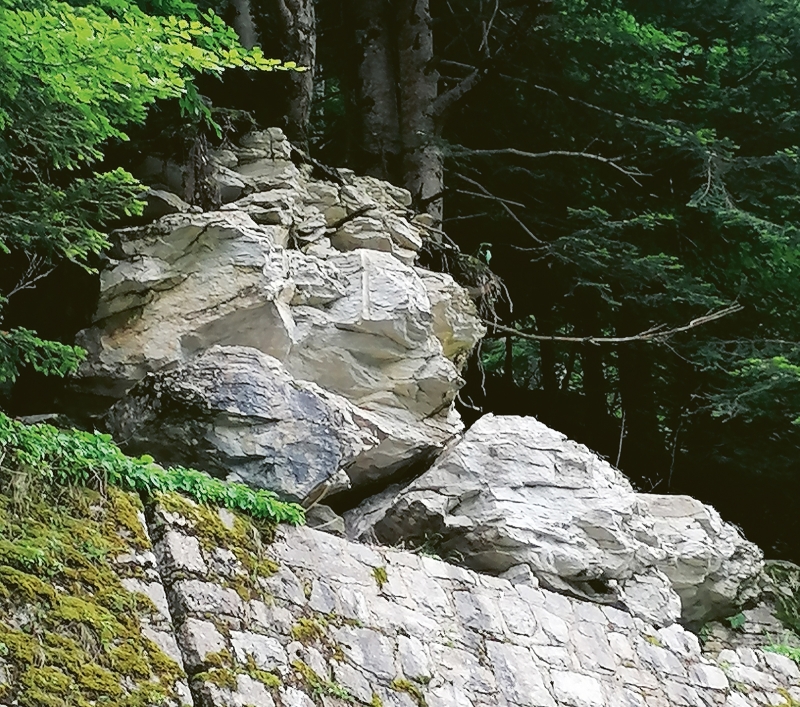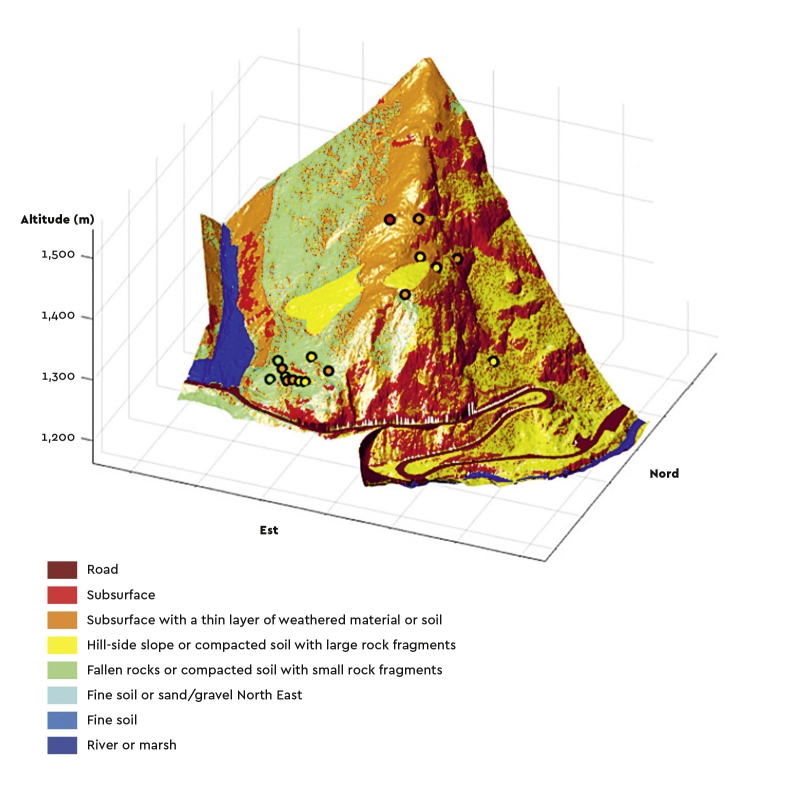Blocks of rock that have slipped down to the edge of the retaining wall above the road in Artouste. © BRGM
Risks and spatial planning
Outstanding result / Moving towards nature-based responses to phenomena caused by weather events
"Due to the effects of climate change, we need to move towards solutions that emit less CO2, or that are less 'grey', in order to reduce natural risks and protect people: nature-based solutions (NBS) make use of biodiversity or involve building structures and systems made of natural materials such as wood, stone, etc.," explains Séverine Bernardie, a Landslide Specialist.
Although BRGM has been working on these issues for a long time, in recent years it has focused on how NBSs can contribute to reducing water and gravity-related risks (rock falls, landslides, erosion, snow avalanches, debris flows) in mountain areas, as part of the H2020 Phusicos project (2018-2023). This project was coordinated by the Norwegian Geotechnical Institute (NGI), which brought together 15 partners from 7 countries with one objective: to demonstrate that nature-based solutions aimed at reducing the risk of phenomena caused by weather events are technically viable, cost-effective and applicable on a regional scale, while increasing the ecological, social and economic resilience of local communities.
Working hand in hand with local stakeholders
"We worked specifically on preventing rock falls on a site at Artouste, in the Pyrénéees," explains Séverine Bernardie. "The choice of site was decided in consultation with local stakeholders, based on their needs, expectations and involvement in the project, as well as financial criteria. We carried out studies to characterise the risk, quantify the role that the existing forest played as an NBS and identify new, more appropriate solutions to reduce the risk further. These solutions were then implemented." Consequently, wooden tripods were installed in areas where rock-falls could potentially start, in order to stabilise them. Wooden structures were also installed in areas into which rocks could fall, in order to hold them back.
These solutions will be assessed over several years, taking into account the benefits in terms of reducing the risk, as well as the economic, ecological and social co-benefits. "We have drawn up a protocol that will ensure the quality and sustainability of the long-term monitoring and analysis of the solutions implemented in the area. This was done with the help of a local working group that was actively committed to the project." This approach will make it possible to test the performance of the timber structures in relation to impacts from rocks and ageing, with the ultimate aim being to standardise the design, sizing and use of these solutions.
Fifteen criteria taken into account
BRGM carried out this assessment in parallel with 187 other initiatives involving nature-based solutions implemented around the world. This project represented a significant amount of work in terms of documentation (description and analysis) structured according to a methodology based on fifteen criteria: the technical feasibility of the NBS, the cost of implementing it, its effectiveness in terms of reducing the frequency of the phenomenon concerned, management and maintenance, the number of jobs created in connection with the NBS in question, the protection of the environment and biodiversity, the involvement of the local community, the community's perception of the solution and the situation, etc.
"Based on this inventory and our assessment, we developed a database that can be used to determine in what context and under which conditions each NBS can be effectively implemented, with information about its performance and the impact it had, whether positive, negative or neutral", says Séverine Bernardie. This free-access web-based platform (phusicos.brgm.fr) will be continuously updated and enhanced with new case studies, in order to serve as a reference base for risk prevention and spatial planning using nature-based solutions.
Example of a structure built in Artouste (French Pyrénées) to stabilise blocks of rock in areas above a strategic road (2022). © BRGM
Removing the main obstacles
The Phusicos project also identified the main obstacles to the implementation of NBSs: lack of regulations for this type of solution, inappropriate financing procedures, the need to document the ageing of structures, standardise the various solutions, and put in place communication strategies, etc. With this in mind, an assessment of the additional research and actions to be carried out to facilitate the use of NBSs was drawn up, potentially paving the way for new projects to gather feedback and promote effective, sustainable nature-based solutions in the future..
3D image of a slope overlooking a busy road that is exposed to rockfalls in Artouste. The nature of the ground was characterised over the entire hillside based on the joint analysis of the distribution of slopes and the broken terrain of localised zones at different scales. The results were validated by comparing them with observation points on the ground (points circled in black). This data was then used to model the propagation of fallen rocks down the slope. © BRGM









